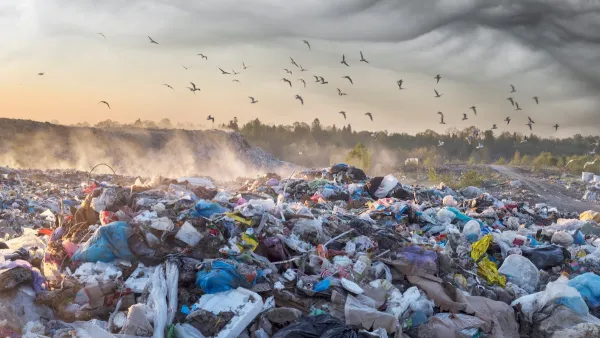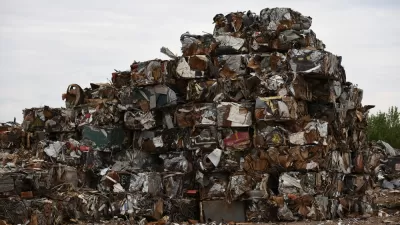The city aims to eliminate the majority of landfill waste by 2040.

A new Comprehensive Plan from Austin Resource Recovery (ARR) charts the city’s path to zero waste, a commitment the city fell behind on after only diverting 40 percent of materials from landfills by 2020, short of its goal of 75 percent.
As Hannah Rossi reports in The Austin Chronicle, the plan identifies the city’s population growth, the increase in “abnormal weather events,” and waste stream privatization as challenges to achieving its zero waste by 2040 goal. According to the plan, privatization “precludes the city from being able to collect accurate data on its progress towards achieving zero waste, as companies fear that any numbers they share will become public record – and ammunition for competitors.”
The plan highlights the urgency of “more infrastructure, more recycling and circular economy education programs, and more access to digital tools and collection services.”
The agency says it has started work on several projects including “an EPA-funded furniture repair and reuse warehouse,” but “acknowledges that there is a long road ahead to ticking off the more than 60 near- and long-term goals it lays out in its Comprehensive Plan.”
FULL STORY: Austin Resource Recovery Charts a New Course to Achieving Zero Waste

Planetizen Federal Action Tracker
A weekly monitor of how Trump’s orders and actions are impacting planners and planning in America.

Map: Where Senate Republicans Want to Sell Your Public Lands
For public land advocates, the Senate Republicans’ proposal to sell millions of acres of public land in the West is “the biggest fight of their careers.”

Restaurant Patios Were a Pandemic Win — Why Were They so Hard to Keep?
Social distancing requirements and changes in travel patterns prompted cities to pilot new uses for street and sidewalk space. Then it got complicated.

Platform Pilsner: Vancouver Transit Agency Releases... a Beer?
TransLink will receive a portion of every sale of the four-pack.

Toronto Weighs Cheaper Transit, Parking Hikes for Major Events
Special event rates would take effect during large festivals, sports games and concerts to ‘discourage driving, manage congestion and free up space for transit.”

Berlin to Consider Car-Free Zone Larger Than Manhattan
The area bound by the 22-mile Ringbahn would still allow 12 uses of a private automobile per year per person, and several other exemptions.
Urban Design for Planners 1: Software Tools
This six-course series explores essential urban design concepts using open source software and equips planners with the tools they need to participate fully in the urban design process.
Planning for Universal Design
Learn the tools for implementing Universal Design in planning regulations.
Heyer Gruel & Associates PA
JM Goldson LLC
Custer County Colorado
City of Camden Redevelopment Agency
City of Astoria
Transportation Research & Education Center (TREC) at Portland State University
Camden Redevelopment Agency
City of Claremont
Municipality of Princeton (NJ)





























